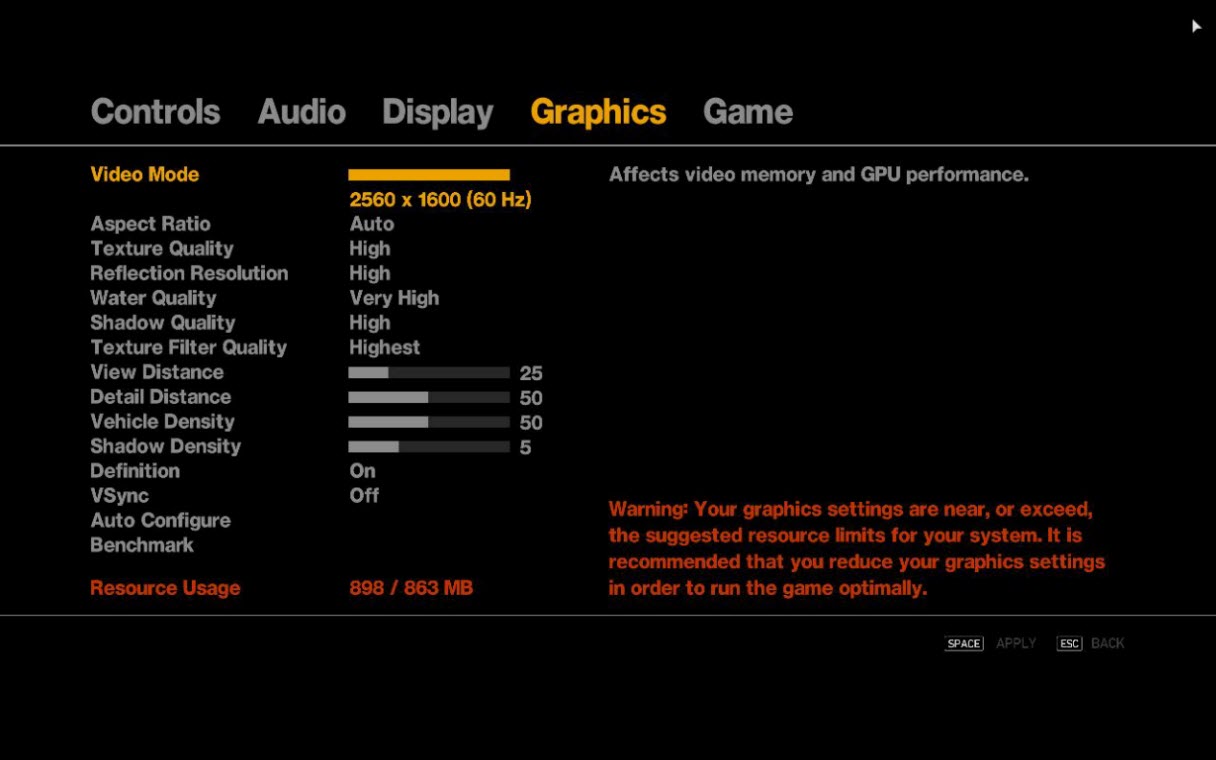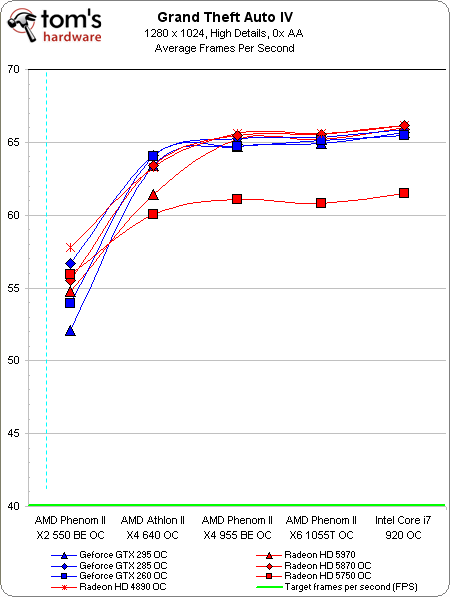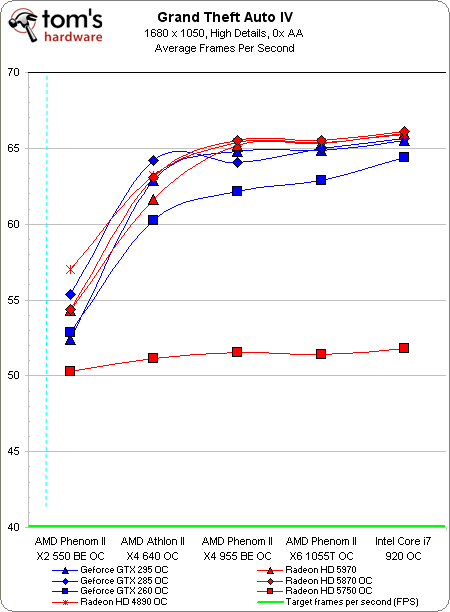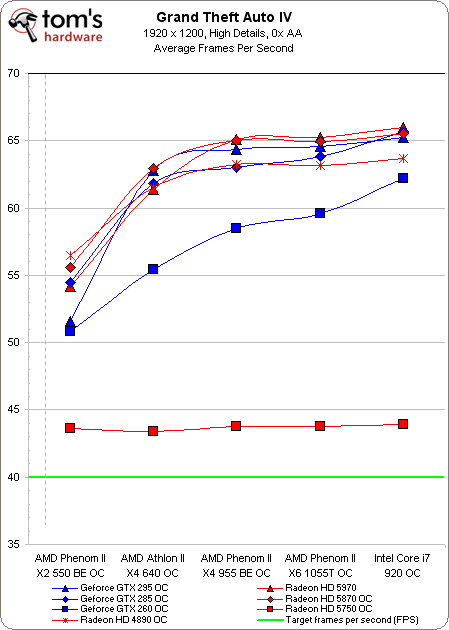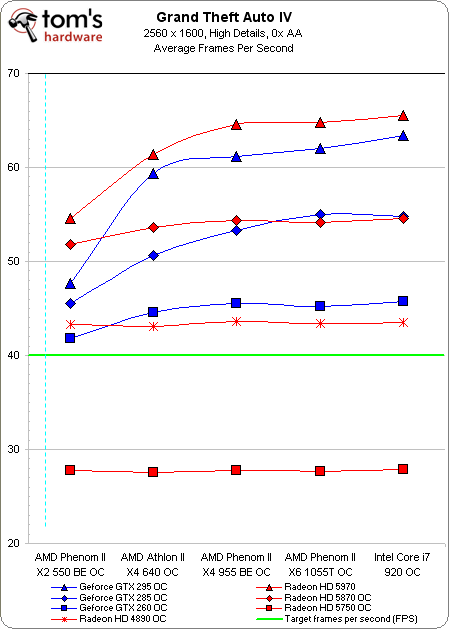Part 4: Building A Balanced Gaming PC
What does it mean to build a truly-balanced PC? How great would it be to piece together a machine bottlenecked by neither CPU or GPU? We set forth to measure the perfect balance in seven different games and four resolutions in this fourth of many parts.
Benchmark Results: Grand Theft Auto IV
Grand Theft Auto IV
The amount of available memory for each graphics core determines the detail levels Grand Theft Auto (GTA) IV allows us to use. Rather than bypassing this constraint, we basically cranked settings for the 896 MB per GPU available on the GeForce GTX 260 and GTX 295. Note that, here, if you were using cards with 1 GB per graphics processor, you could additionally raise Shadows to Very High and set view distance to 30%.
I was totally new to the GTA series when I started work on this project. But having heard the voices of readers wanting to see this game added to the benchmark suite, I obliged. The first order of business was to play the game on various configurations and get accustomed to the expected performance and hardware requirements. We again use the game’s built-in benchmark and shoot for a target of 40 FPS. Some time spent playing on our tested platforms indicated that systems capable of reaching this target were at least playable, providing 30+ FPS during intensive game play, with just the occasional dip into the mid 20s. Whether in-game or running the benchmark, GTA IV doesn’t seem push graphics cards all that hard.
GTA IV is clearly the most CPU/system-limited game we have visited thus far, as performance for all graphics cards are pretty much bunched tightly together. The overclocked Phenom II X2 550 Black Edition is able to provide 50+ FPS on average, but it’s clear this CPU is holding back even our lowest tested video card. If you are seeking balance in this game, chose a processor with more cores.
Pretty much the same results are seen at 1680x1050, although a bit more spacing is evident between graphics cards.
The overclocked Radeon HD 5750 can still get the job done at 1920x1200 paired with any of the CPUs, but given enough processing horsepower, a GeForce GTX 260 or Radeon HD 4890 offers a vastly superior level of performance.
At stock clocks, the GeForce GTX 260 had completely fallen below the mark at 2560x1600, but the factory-overclocked card sits comfortably above the line, besting the Radeon HD 4890 when paired with four or more processing cores. The Radeon HD 5870 averaged similar performance with each CPU, but it's likely that factoring in minimum framerates would still favor the higher-end processors. When matched up to a capable-enough CPU, the GeForce GTX 285 could be swapped in for equal performance. Remember, cards with 1 GB of graphics RAM would allow slightly higher detail levels than what we are able to run with the 896 MB frame buffer of the GeForce GTX 260 and GTX 295.
Get Tom's Hardware's best news and in-depth reviews, straight to your inbox.
Current page: Benchmark Results: Grand Theft Auto IV
Prev Page Benchmark Results: S.T.A.L.K.E.R.: Clear Sky Next Page Benchmark Results: Fallout 3-
wildeast "such as NVidia’s GeForce GTX 400-series and revamp the benchmark suite with some new DirectX 11 titles."Reply
i'll be waiting for that, and maybe some i5 cpu to see what fit sli best -
jsowoc "We set forth to measure the perfect balance in seven different games and four resolutions in this third of many parts." (?)Reply
I think you copied this paragraph from part 3 and forgot to change it to 4... ;-) -
theshonen8899 With the amount of love you guys have for the Athlon x3 I was really hoping to see it on here :\Reply
I guess I can kind of predict where it'd fall though. -
L0tus Brilliant piece.Reply
I wish I had read this before building my system as I can see that I clearly spent too much on my CPU instead of GPU (i5-750 + HD5770) . Would have done much better with (X2 550 BE + HD5850) !
...ain't hind sight a b***h!
Also interesting to see how GPUs really start to distinguish themselves at higher resolutions. Again, brilliant work. -
TheStealthyOne I built a computer for my brother using a Phenom ii 550 paired with a 5770, and it screams! Fantastic gaming chip! It just goes to show you can achieve fantastic performance by planning and balance.Reply -
garlik_bread Personally, i'd be interested to see results from a card with less han 1GB RAM on the GPU.Reply
On the lower end of the spectrum, with the lower resolutions, is the 1GB really necessary?
Basically, i have a 512MB Asus 5770 and want to validate my purchase :D -
plasmastorm Still running a Maximus formula 775 board with a Q6600, 8gb ram and a Radeon 5850 but this is certainly handy for future reference.Reply
Probably skipping the i5/i7 generation as I can still play anything at max settings on my 22" monitor while running a 2nd for a film tho :) -
descendency plasmastormStill running a Maximus formula 775 board with a Q6600, 8gb ram and a Radeon 5850 but this is certainly handy for future reference.Probably skipping the i5/i7 generation as I can still play anything at max settings on my 22" monitor while running a 2nd for a film thoReply
i5/i7 isn't a generation. it's like 5 or so.
It's the same thing as C2D and C2Q
